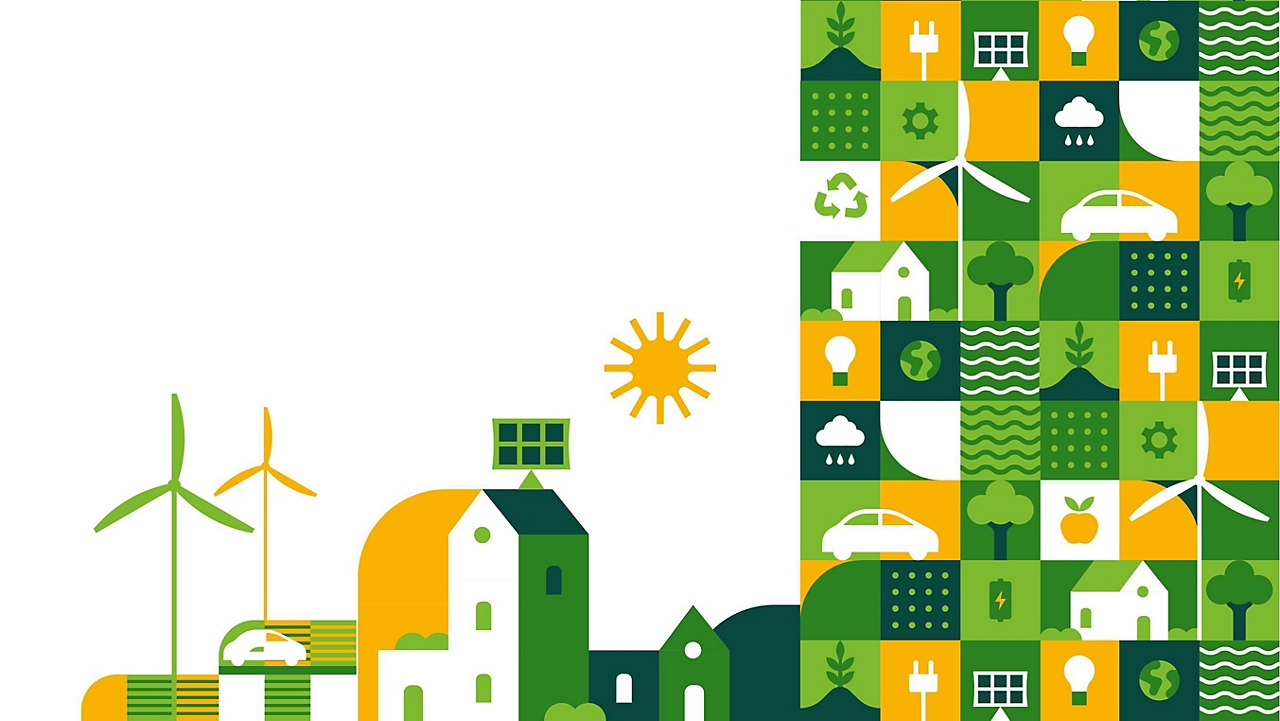‘Rurban’ Housing for a Greener Future
By Nagesh Battula, Founder & CEO, Organo Eco Habitats Private Limited (Organo), and Meena Murugappan, GM, Product Strategy and Innovation, Organo Eco Habitats Private Limited (Organo) |Jun 01, 2023
Albeit slowly, the evolving sector of sustainable real estate is gaining popularity in India. Consumers have shown deep curiosity in housing which utilises renewable energy, conserves water, and has an efficient waste management system. As we move towards building a greener and brighter future, it is important to embrace sustainable practices in all aspects of our lives, especially in our neighbourhoods and within our homes.
Sustainability has become a global buzzword, permeating across all industries including fashion, mobility, and real estate. Today, consumers are increasingly conscious of investing in products and services that are ‘pro-planet’. However, this increased awareness did not arise abruptly or solely due to the rise of social media.
The concept of sustainability, as an important climate action, first gained momentum post industrialisation when the rapid depletion of resources and numerous man-made disasters led to severe scarcities. People started recognising the importance of mindful consumption and the need to conserve natural resources. These growing concerns for a sustainable approach caught the attention of several global governing bodies, who began working towards and promoting sustainable practices. The United Nations (UN) played a significant role in this endeavour by introducing the 17 Sustainable Development Goals (SDGs) in 2015.[1]
Another contributing factor is the occurrence of health epidemics, with the COVID-19 pandemic serving as the most recent and striking example. Such large-scale health crises can often prompt individuals to reevaluate various aspects of their lives, fostering increased caution and awareness. People become more cognisant of the interconnectedness between their own well-being, the choices they make, and their impact on the environment. This is what is driving individuals now to seek sustainable alternatives and adopt eco-friendly practices.
In response to this global movement, ‘green’ real estate companies have emerged with an aim to incorporate sustainability into all facets of the housing industry. How is this sector of the industry faring in terms of capturing the market and attention of their customer pool? To answer this, let us first understand what this industry is all about.
Let us Revisit What is ‘Green’
We believe the ideal situation would be the one where we no longer need to label any product or service as 'green.' We dream of a world where, by design and by default, all products are earth friendly. Real estate companies and their projects should aim to provide housing without the need for specific color-coded labels like green, gold, or platinum—it should simply be considered apt housing. However, since there is still a long way for this movement to gain momentum in the Indian as well as global markets, and the term ‘green’ helps to educate consumers and attract them towards a sustainable form of living.
As for the definition of green housing, it is essentially about housing communities that are coexisting with nature. It involves the prudent and optimal use of raw materials and land, creating environments that support other living beings like local flora and fauna, and promoting in-house farming, among many other crucial elements. While the use of sustainable construction materials is important, the real essence lies in laying out the right blueprint and design.
Although there is no strict rule of thumb that can dictate the step-by-step guide for building a sustainable neighbourhood, we believe that it is important to consider counter-urbanisation as an important step towards greener neighbourhoods. With deep permeation of internet connection, satellite TV, remote working, remote schooling, and distributed emergency health services, the advantage for urban agglomerations has been reducing. More and more tier-II[2] and tier-III[3] cities are now equally connected to the rest of world as tier-I[4], while offering a simpler and healthier environment for families to thrive in.
It is time for us to look at systems innovation rather than incremental innovation in housing. An example of systems innovation—instead of looking at energy efficient cars, perhaps we can create walkable cities. Another example is of the commercial buildings or workspaces that are built in India. There is one common material used in most of them as the external walls—glass facades that comes with a green rating.[5] While glass is indeed recyclable and green-rated, given the Indian climatic conditions, it doesn't offer any significant benefits to these buildings beyond an aesthetic look. Ideally, considering India's hot and humid summers, solid walls with optimised openings would be more appropriate as they provide natural cooling effect inside the building. Therefore, we need to relook at our working, living, and schooling environments that respond naturally to local climate and comfort.
It is, therefore, important that sustainable or ‘green’ neighbourhoods focus on collective human experience, rich biodiversity, demand reduction in energy and water, clean energy production, proximity to food sources, apt waste management and soil health improvements, and social impact, in addition to utilising green construction methods and materials. It is equally important to layer user-centric design for joyful living amidst local flora.
Challenges for Green Developers
In the development of sustainable projects, there are multiple challenges faced by real estate companies and developers, especially in housing sector. Let us understand them in greater detail:
- Cost considerations: While green buildings offer long-term cost savings through reduced energy consumption and operational expenses, the initial upfront costs can be a bit higher compared to traditional construction. However, this delta cost increase has been reducing over the last 20 years with increased product innovation in construction materials and energy solutions. Consequently, convincing potential buyers or investors that the higher upfront costs are offset by long-term savings and environmental benefits has become a lot less challenging. Therefore, overcoming past perceptions and demonstrating the financial viability of green buildings is crucial to their widespread adoption.
- Bank funding: Securing financing for green real estate projects can be challenging for first time developers. Since ‘rurban’ housing communities are typically constructed in areas outside the city limits, collaborating with banking institutions can be challenging. Some banks have specific criteria, including a designated distance radius within which they prefer beneficiaries to build, which acts as a hurdle for the developer to get a project financed and for the customers to secure home loans.
- Consumer awareness and demand: Creating a demand for green properties can be challenging, as not all consumers are aware of the long-term benefits. Green real estate developers need to educate potential buyers about the advantages of energy-efficient homes, healthier living environments and reduced ecological footprints. Increasing consumer awareness and understanding of green building practices is vital to mainstream sustainable properties.
- Regulatory and policy frameworks: Advocacy for policy changes that promote sustainable housing can create a more conducive environment for green real estate development. Incentives such as single-window approval system for ‘rurban’ communities or sustainable housing will encourage more mainstream developers to also consider transitioning to eco-housing.
Amidst all these challenges, it is also important to acknowledge the fact that sustainable living is a choice that prevails in elite communities as of now. Currently, eco-communities are more of supply push rather than demand pull. Increased awareness and innovation from the supply-side can help solve this issue and thereby accelerate the demand.
Adopting Sustainability in Existing Communities
While it may be relatively easier to incorporate sustainability features into new construction projects built from the ground up, revitalising existing buildings and structures to align with sustainable practices presents a complex and multifaceted challenge within the realm of green real estate.
For existing communities, educating residents on the upgrade possibilities and transformation to eco-communities is imperative. This can be done through regular workshops on various conservation methods, upgrades to include on-site power generation, productive landscaping, imposing rules on waste management, etc.
The task of maintaining and upgrading existing buildings can be carried out by implementing the following:
- Retrofitting and renovation: Existing structures can undergo retrofitting and renovation processes to improve their energy efficiency and overall sustainability. This can involve upgrading insulation, installing energy-efficient appliances and lighting systems, optimising water usage through plumbing improvements, and implementing renewable energy solutions like solar panels. Likewise, instead of demolishing old buildings, adaptive reuse involves repurposing existing structures for different functions.
- Planning your landscape for productivity: Another practice that is often missed is 'productive' plantation. This can be incorporated through adding edible agriculture like fruits, vegetables, and herbs that can be consumed by the residents. Rather than focusing solely on ornamental plants, prioritising fruit-bearing trees and plants maximises resource utilisation and supports sustainable food production.
- Behavioural changes and awareness: Educating residents and tenants about the importance of sustainable living and providing resources for environmentally responsible behaviours can lead to positive changes. Workshops on making compost, segregating waste, and using fewer resources can have a huge impact.
Paving the Path for a Sustainable Future
In conclusion, the journey towards sustainable real estate is multifaceted, requiring the collective effort of businesses, governments, and individuals. By fostering an open mindset and increasing awareness, developers and real estate companies can play a pivotal role in driving sustainable practices forward.
Moreover, green organisations must have a clear purpose to resonate with today's generation. Employees and consumers alike are drawn to brands that have a meaningful purpose aligned with sustainability. Embracing purpose-driven practices fosters a sense of shared responsibility and connection to the environment.
Use of clean energy, proper wastewater management systems, and efficient waste management practices are vital elements of sustainable living, but they should also slowly become non-negotiables for a normal lifestyle. As communities, it is important to transition from consumer mindset to producer mindset.
For it is up to us, as humans, to understand climate change and respond with apt actions within our domains of work and influence. By embracing sustainable practices, raising awareness, reducing the roadblocks to adopting eco-living, and working together, we can pave the way for a future where harmony between humanity and nature thrives. Let us seize this opportunity to create a better world for ourselves and future generations.
[1] United Nations. (n.d.). Sustainable development goals | United Nations development programme. UNDP. https://www.undp.org/sustainable-development-goals/no-poverty?gclid=Cj0KCQjwyLGjBhDKARIsAFRNgW8BXrYpE5iz1tvLBleXFr6IiIzsB-t6OrHQ7F12zKAMcxfVQfD-WRsaAgjKEALw_wcB
[3] Tier-III cities in India are cities which are underdeveloped.
[4] Tier-I cities in India are cities which are most developed.
[5] A green rating tool evaluates the performance of a building against certain nationally acceptable benchmarks.

Nagesh Battula, Founder & CEO, Organo Eco Habitats Private Limited (Organo)
Nagesh is an architect with over three decades of experience. He has built a successful design company that has engaged over 200 professionals with four branches across different cities and two countries. Recently, he established Organo, a 'rurban' eco-habitat company that designs homes in eco-communities for urban families. His core areas of expertise are eco-habitat development, farm scaping, sustainable development, design thinking, construction management, community building, and outreach.

Meena Murugappan, GM, Product Strategy and Innovation, Organo Eco Habitats Private Limited (Organo)
Meena has over 20 years of international and local experience in architectural design, real estate development, business design and operations across South Asia and Middle East. She is passionate about collaborating with co-dreamers, designing and building with co-creators, and working towards mainstreaming unique first-to-market eco-communities. She has a bachelor’s in architecture from School of Planning and Architecture, Chennai and a master’s in real estate development from MIT, Boston.




